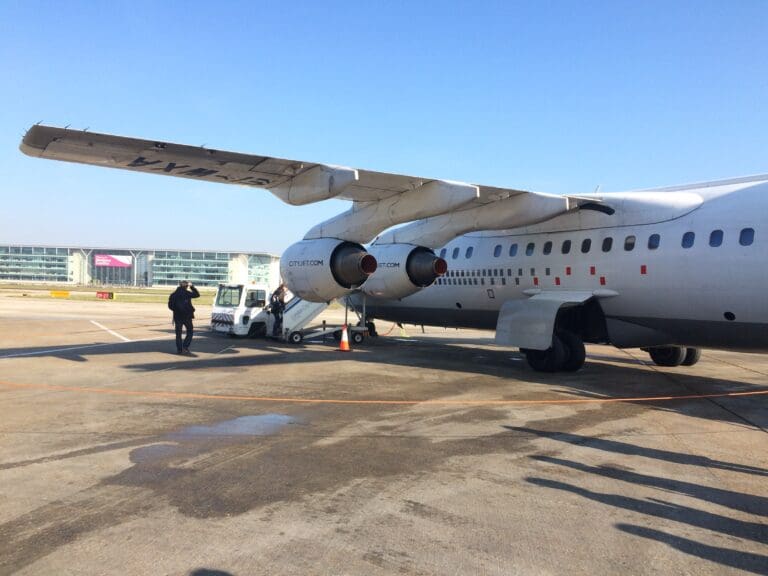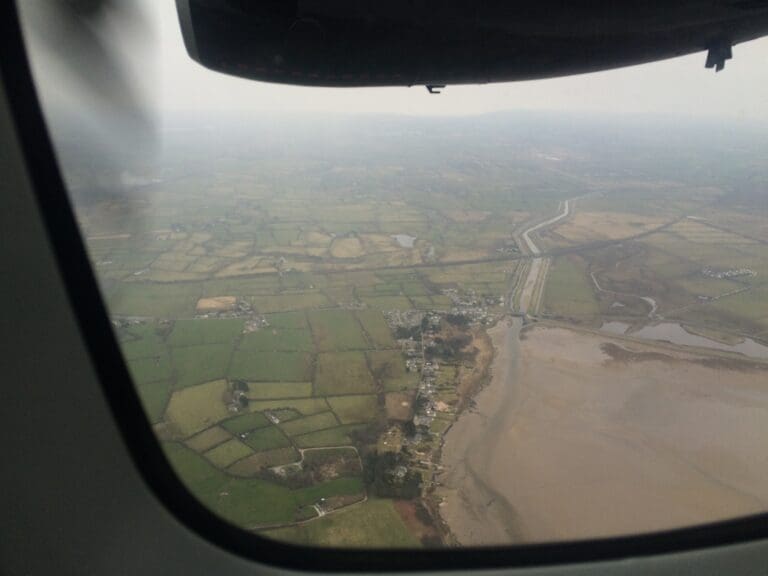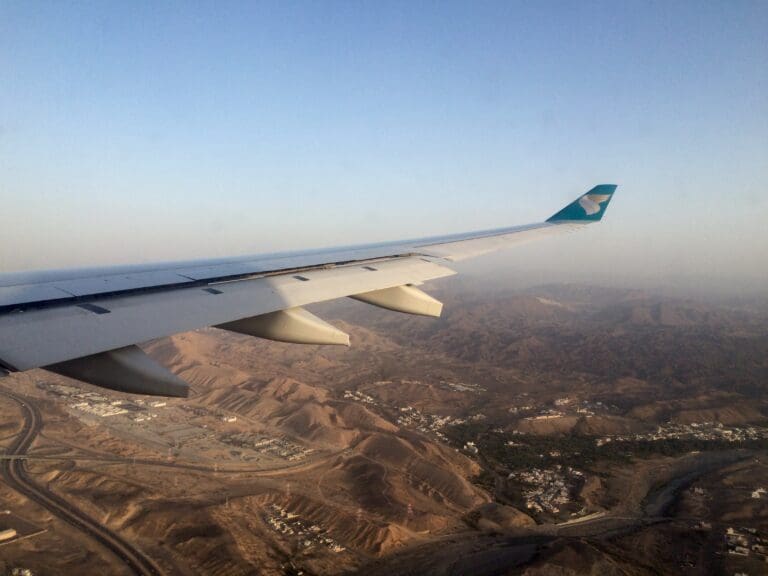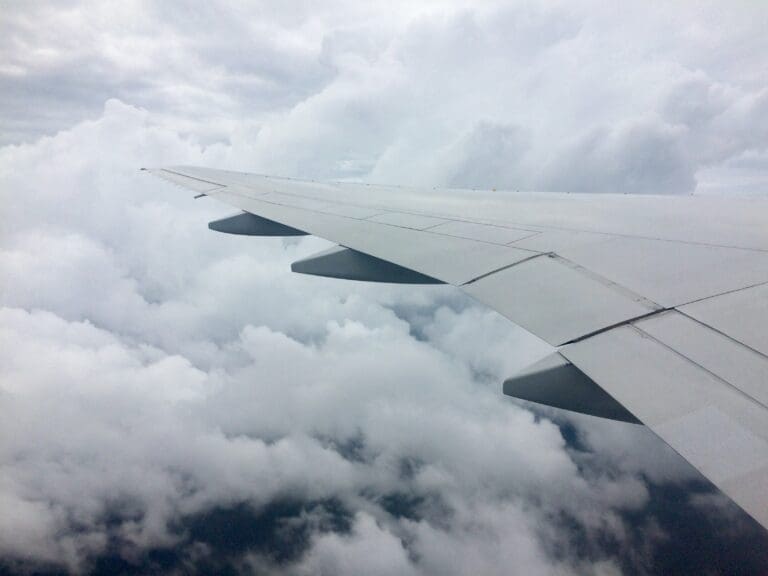My Best Turboprop Ride Ever? Phuket to Hat Yai with Bangkok Airways
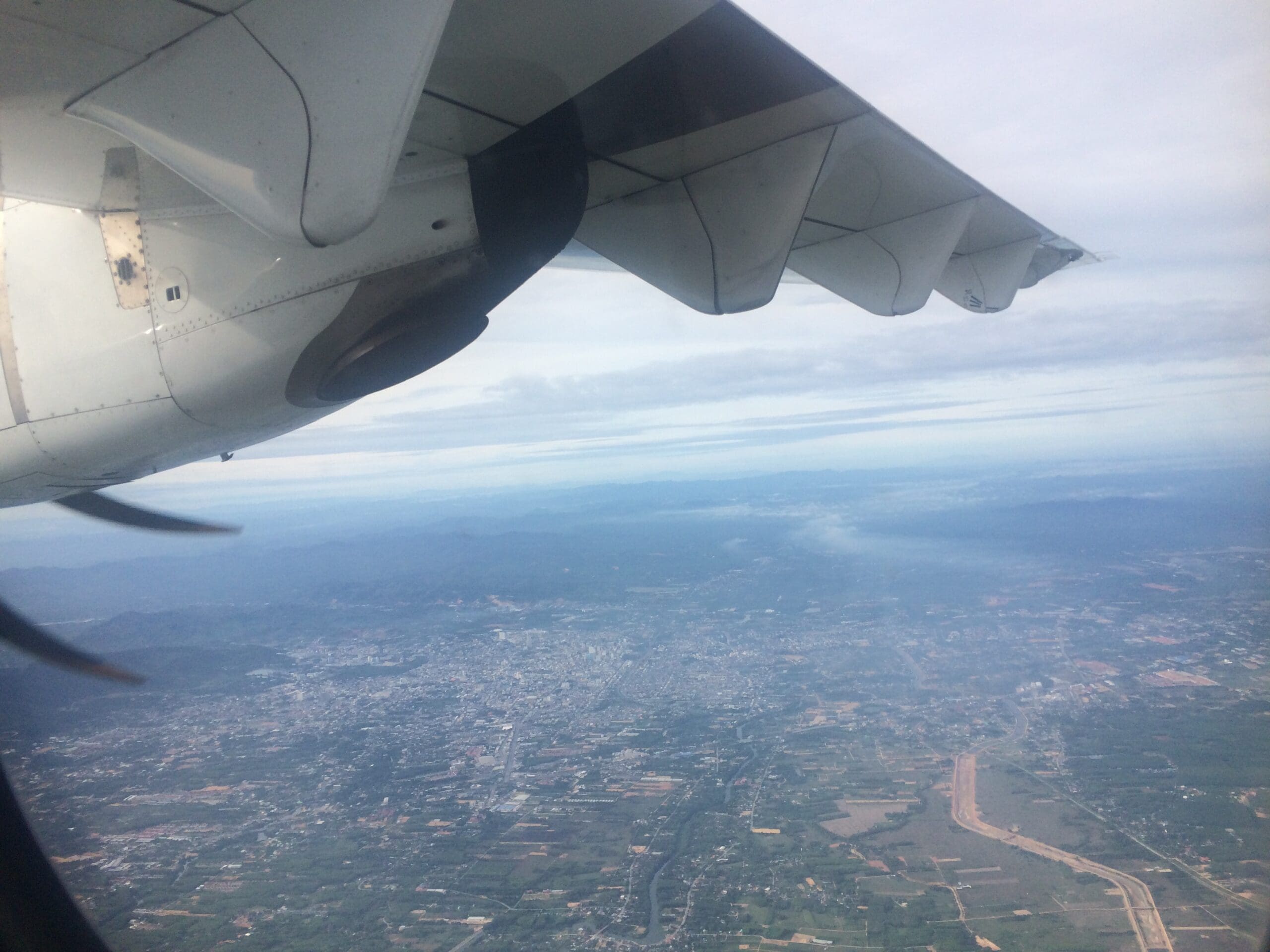
Background
If you need to travel between Phuket and Hat Yai in Southern Thailand, there aren’t too many options. For backpackers seeking a cheap adventure and with plenty of time, direct buses make this journey in around eight hours. However, being on a tight schedule, I decided that the best option was to make use of Bangkok Airways’ direct service between the two, especially seeing as this was just as cheap as flying on a bargain ticket to Bangkok and then back down to Hat Yai with Thai AirAsia or Thai Smile. Booking directly with Bangkok Airways was an easy experience and a one-way ticket on the carrier’s morning ATR-72 operated service set me back a modest 1700 Baht (around $50). Despite being the cheapest ticket, this would enable me to bring along 20kg of luggage and therefore no optional extras were required.
About Bangkok Airways
Thanks to its comparatively compact route network, internationally, Bangkok Airways is not exactly as well known as Thailand’s national carrier Thai Airways. However, having been established in 1968, the airline is a well-established player in the Thai aviation scene and is the country’s second oldest airline remaining in existence. Starting life as Sahakol Air, for the first eighteen years of operation the company operated air taxi services on behalf of both Thai and foreign companies and organisations. During this time, the company operated a smorgasbord of types that included the Britten-Norman Islander, Douglas C-47A Skytrain and Pilatus PC-6.
In 1986, the carrier began to shift away from its air taxi role and commenced scheduled domestic services before rebranding as Bangkok Airways in 1989. Armed with a fleet of Dash 8s which were soon supplemented by ATR 42s and 72s, the airline built up a modest network of flights across Thailand from its hub at Bangkok’s old primary airport, Don Mueang. Meanwhile, the airline also invested in developing airports in Ko Samui, Sukhothai and Trat. Expanding further, at the turn of the millennium, the airline brought in four brand new Boeing 717 jets, in addition to forming a wholly owned Cambodian subsidiary, Siam Reap Airways.
From 2000, Bangkok Airways underwent a significant expansion that saw its international footprint grow with the establishment of routes to Bangladesh, Cambodia, China, Hong Kong, India, Laos, Malaysia, Myanmar, Singapore and Vietnam, supplementing its complex domestic network of flights. Meanwhile with long-haul aspirations, in 2005 Bangkok Airways placed an order for six Airbus A350s, although this was cancelled in 2011. Today, Bangkok Airways operates a straightforward fleet of Airbus narrowbodies and ATR 72 aircraft, and has been able to establish a very good reputation amongst the travelling public. Marketing itself as ‘Asia’s Boutique Airline’, the carrier attracts plenty of positive reviews and proudly advertises the fact that it is the ‘world’s best regional airline’. Needless to say I was eager to experience this world class service myself!
The Journey
Given my early start, I decided that it was sensible to stay near the airport and with a cornucopia of cheap hotels and apartments located a short distance away from the terminal, I had no issue with booking a bargain night’s stay in one of these. Waking up bright and early, following a shower and a last minute check to ensure that I had packed everything that I had arrived with, I made my way to reception. Once there, whilst the airport terminal was only a few minutes’ walk away, the hotel staff insisted that I catch the complimentary shuttle to the airport. Not seeking any confrontation, I took them up on their insistence and was soon whisked away in a slightly battered Toyota Hiace.
At the time of my flight in June 2016, Phuket Airport’s new terminal was still under construction, so both international and domestic services utilised the old and comparatively small original terminal. In no time at all, the Toyota pulled up to the dated and unassuming exterior of the terminal and after tipping the driver, I made my way inside. Like many airports in the region, first up was a security checkpoint which I was able to pass through quickly and without issue, before I found myself in the check-in all. With the morning rush in full swing, at that time the check-in hall was rather busy with passengers seen queuing at the desks of AirAsia, Bangkok Airways, Emirates, Nok Air, Qatar Airways and Thai Airways. Wandering over to the Bangkok Airways counters, I joined a long queue of passengers bound for Bangkok and Hat Yai, although with plenty of staff on hand, this shuffled forward at an acceptable pace.
As soon as I reached the desk, I was greeted by a very friendly Bangkok Airways agent. Following the usual typing, my bag was tagged and sent on its way and I was handed a boarding pass. Once this formality was over, it was time to continue onwards and make my way to security. As I neared the checkpoint for the domestic departure area, I was not particularly surprised to spot a reasonable queue, although just as at check-in, this moved along quickly and I was soon able to proceed onwards.


Whilst I only had an hour or so to linger until boarding for my flight to Hat Yai commenced, this proved to be more than enough time to explore the delights of the domestic airside portion of the terminal. Despite its compact size, a fair number of facilities are on offer including a Burger King, a Subway, several cafés and a host of convenience and souvenir shops, alongside Bangkok Airways and Thai Airways lounges. Much to my surprise, whilst I was a lowly Economy passenger, the former lounge was open to all those heading of on Bangkok Airways’ flights. Making full use of this, I wandered in and was presented with a cosy lounge area with a small buffet of light snacks that included breadsticks, chicken pies, strawberry and chocolate cakes as well as tea, coffee, juices and iced tea. Whilst those more used to the front end of aircraft may be disappointed with this offering, I was incredibly impressed by the provision of a lounge for Economy class passengers and this ultimately made a lasting positive impression on me.
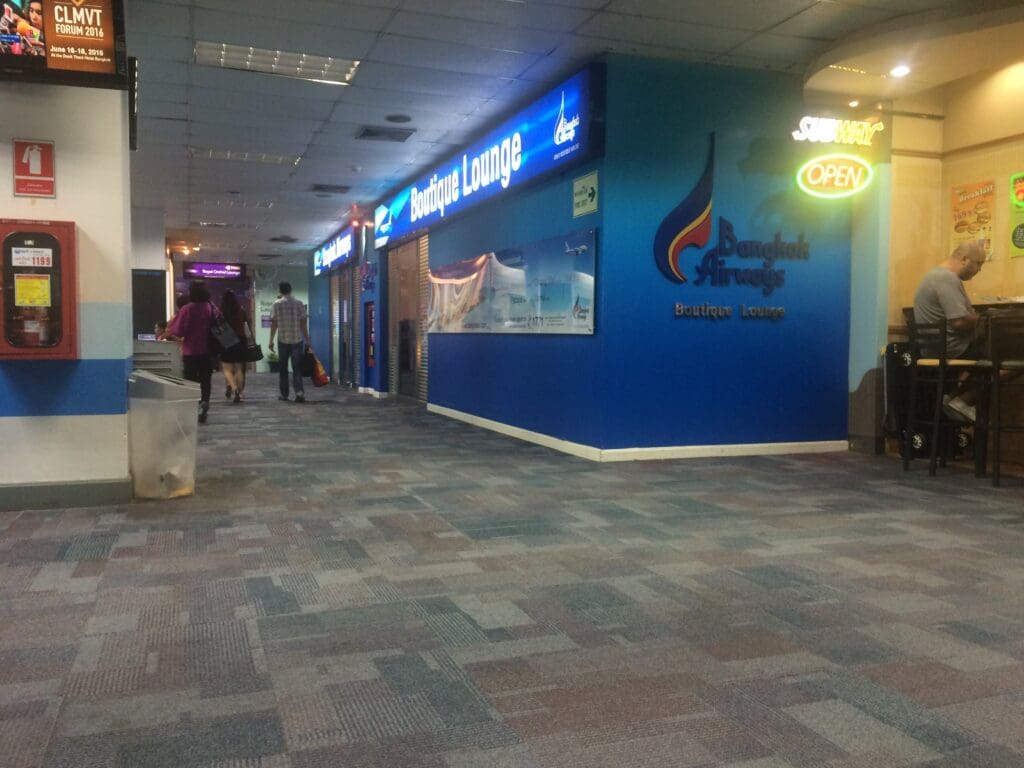
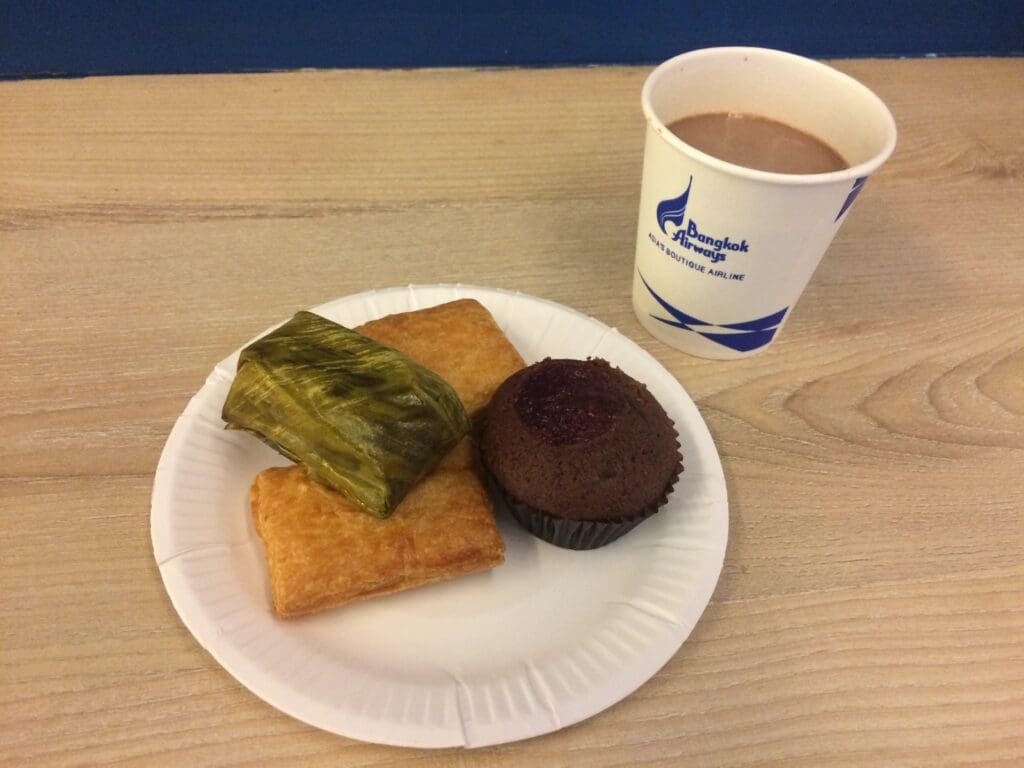
Following a pleasant stay in the Boutique Lounge, I headed back out just before boarding for the flight to Hat Yai was announced. At 0700 on the dot, the gate agent performed an announcement in Thai and English inviting all passengers to board. Soon joining the short queue at the gate podium, the same friendly agent that had checked me in, scanned my boarding pass and wished me a nice flight before I headed down the escalators and darted onto the waiting bus. Being one of the first passengers to board the bus, a fair bit of waiting was required as the ground staff attempted to successfully squeeze all those bound for Hat Yai onto a single bus. Eventually, with all passengers onboard, we pulled away from the terminal and skirted around the edge of the apron. At that time, a smorgasbord of aircraft could be seen which included an Emirates Boeing 777-300ER, Nok Air Boeing 737-800, Qatar Airways Boeing 787-8, Thai AirAsia Airbus A320 and a Thai Airways Airbus A330-300.
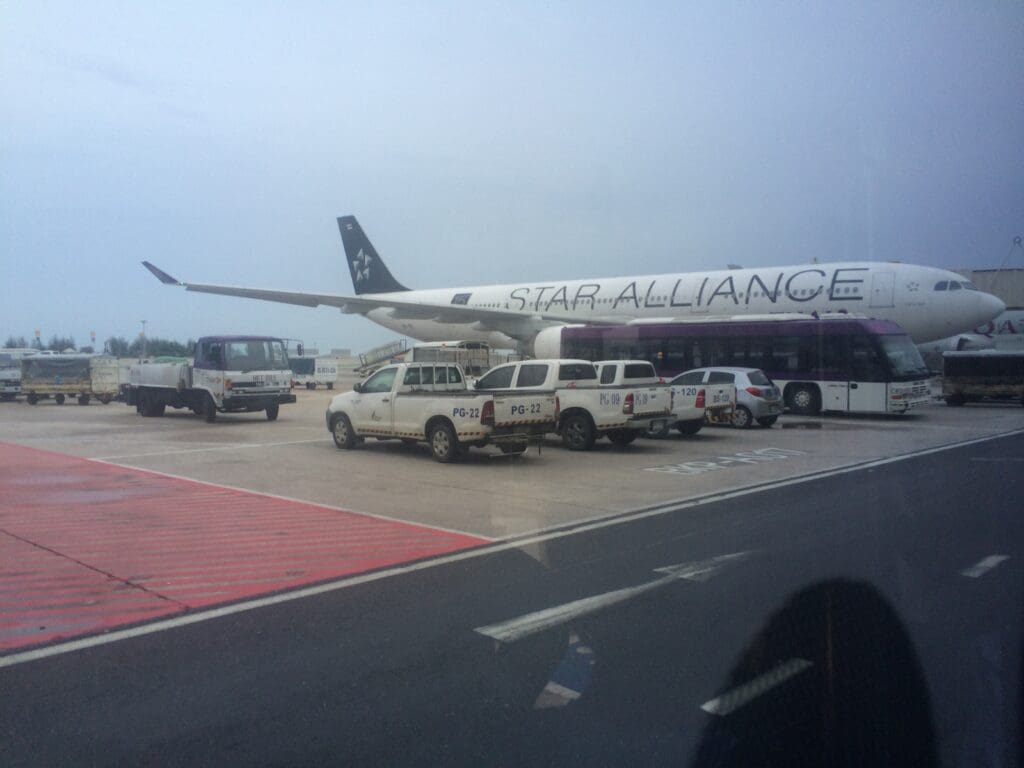

Following a short journey, the bus pulled up to Stand 33 where the only Bangkok Airways aircraft on the ground at the time could be seen being readied for its first flight of the day. This particular aircraft took the form of ATR 72-600, HS-PZC. Manufactured at Toulouse Blagnac, this turboprop made its first flight around ten months prior in August 2015 with the test registration F-WWEV. Following testing, in September that year the aircraft was handed over to Bangkok Airways and made the long journey from France to Thailand over three days. This saw the aircraft make stops in Paphos, Bahrain, Muscat and Colombo.
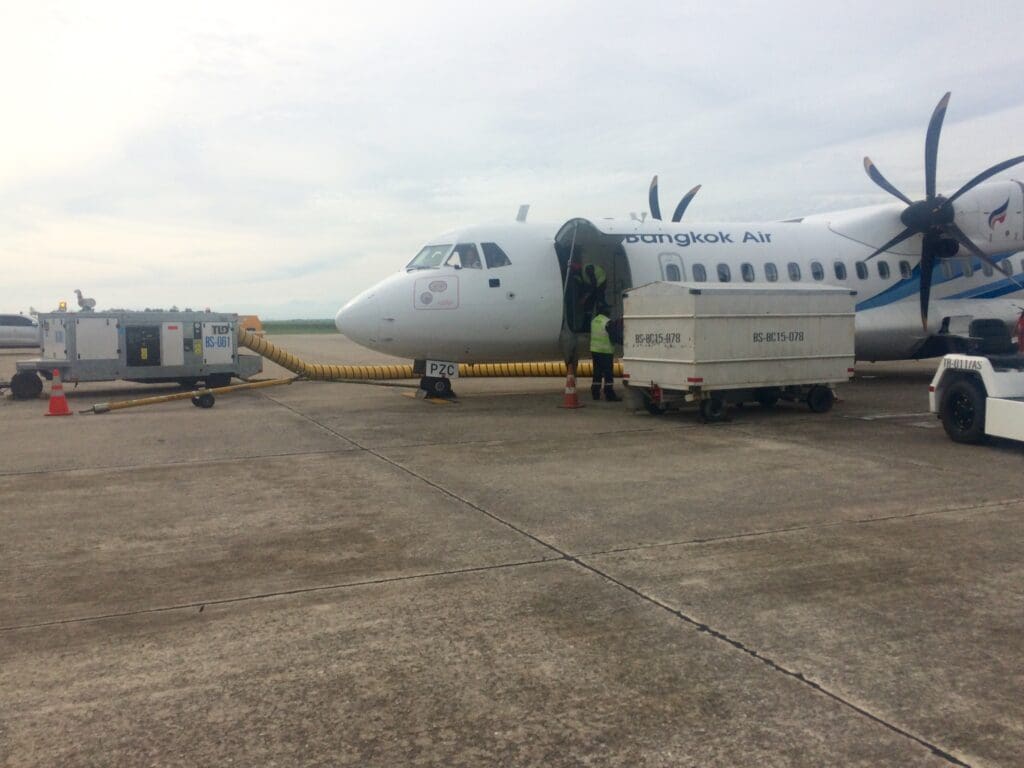
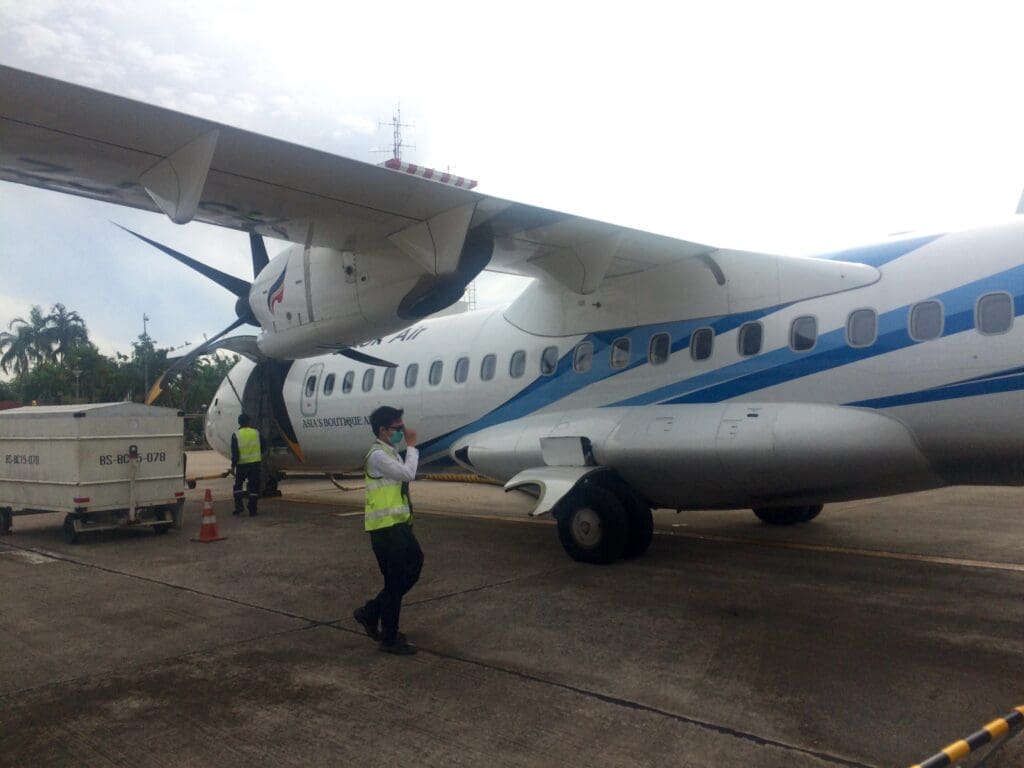
Following a short pause, the bus doors opened and passengers spilt out onto the apron. Making a beeline through the hot humid air towards the rear built-in steps, I waited for a few moments before clambering up these and entering the ATR 72’s miniscule rear galley. As soon as I entered the aircraft, I received a warm and friendly greeting in English and Thai from one of the two flight attendants onboard before immediately turning right and entering the seventy-seat cabin. There, each seat was modern and thin in its appearance, covered by a light blue pleather cover and complete with a literature compartment and seatback pocket. Soon making it to my seat, I strapped myself in and prepared for the journey ahead. Looking around, I found the area around my seat to be in tip-top condition, spotlessly clean and with virtually no signs of wear and tear. Furthermore, the seat was comfortable and came with an acceptable amount of legroom for the short hops that the aircraft performs.

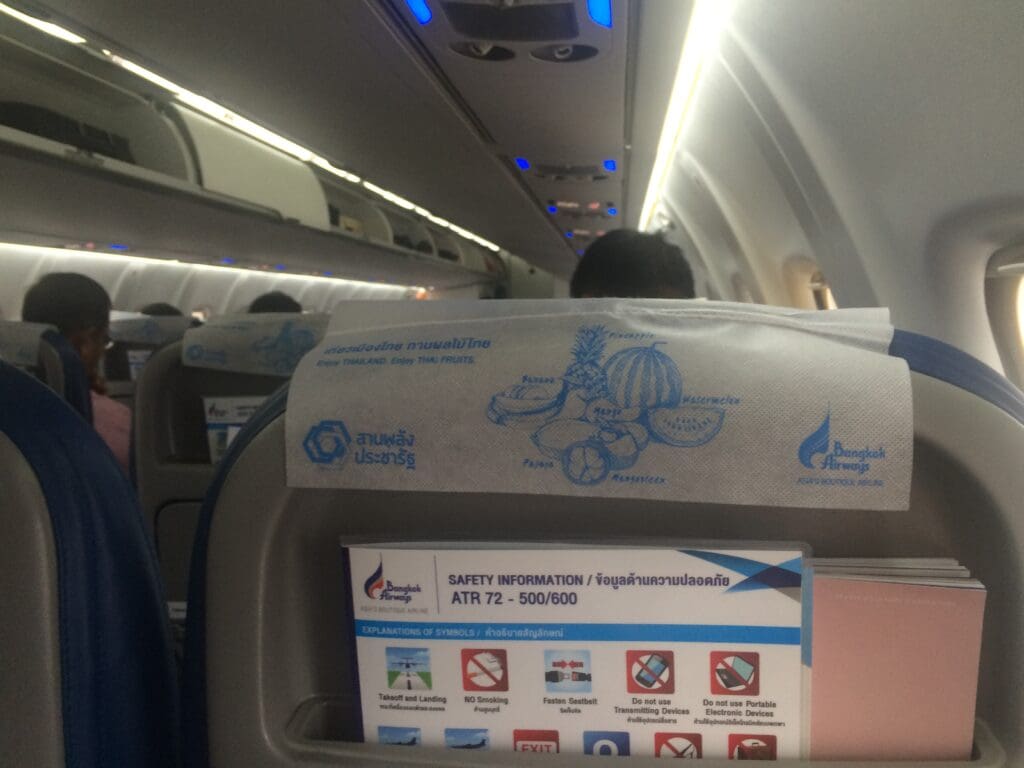
That morning, all passengers boarded quickly and the flight ended up being around 60% full with the seat next to mine remaining empty. Almost as soon as the last passenger had boarded the aircraft, a loud thud could be heard as the cabin door was closed, followed a few minutes later by a quick welcome announcement in Thai and English. At this time, the aircraft’s two Pratt & Whitney Canada PW127M turboprop engines spooled up into life and the aircraft was pushed back away from the stand. Meanwhile, as this was underway, the safety demonstration was performed before the crew passed through the cabin ensuring everything was secure and in place for our departure from Phuket.
With our engines already spooled up and ready to propel us all through the skies of Southern Thailand, just a short pause was in order whilst the tug was disconnected before the aircraft commenced its taxi to the runway. With little traffic around at the time, the aircraft soon reached the end of Runway 27 and taxied onto this without holding. Once there, the two engines powered into life and sent us flying down the runway, accelerating rather vigorously and with a few bumps and sways before the ATR 72 rocketed upwards into the skies.
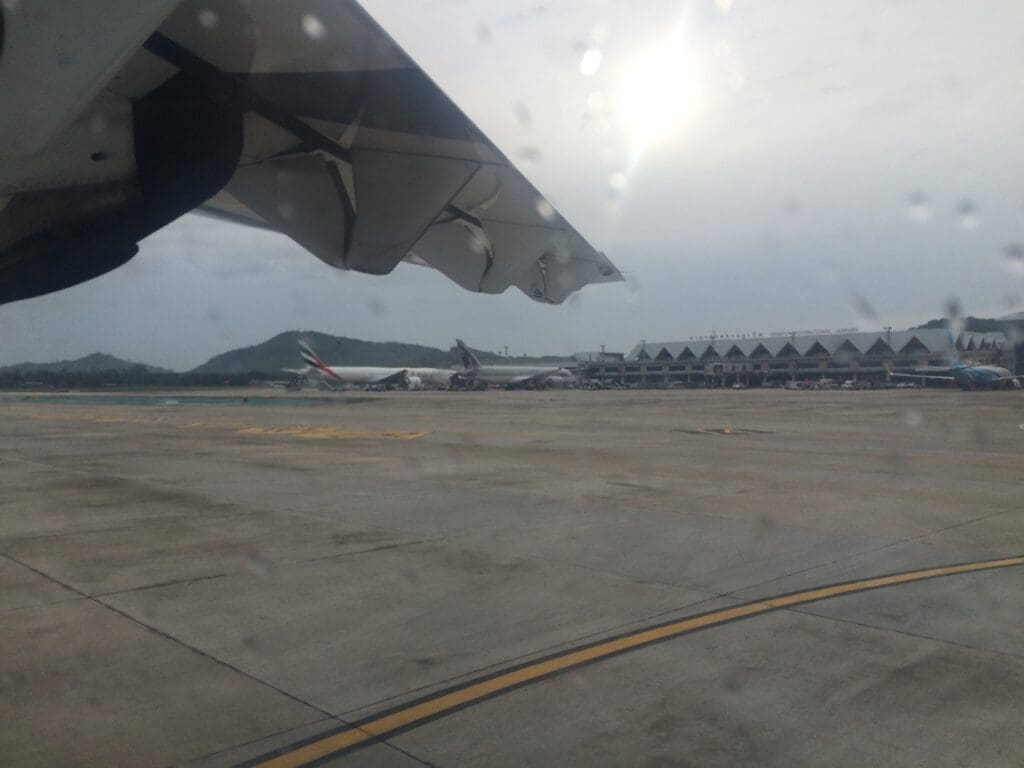
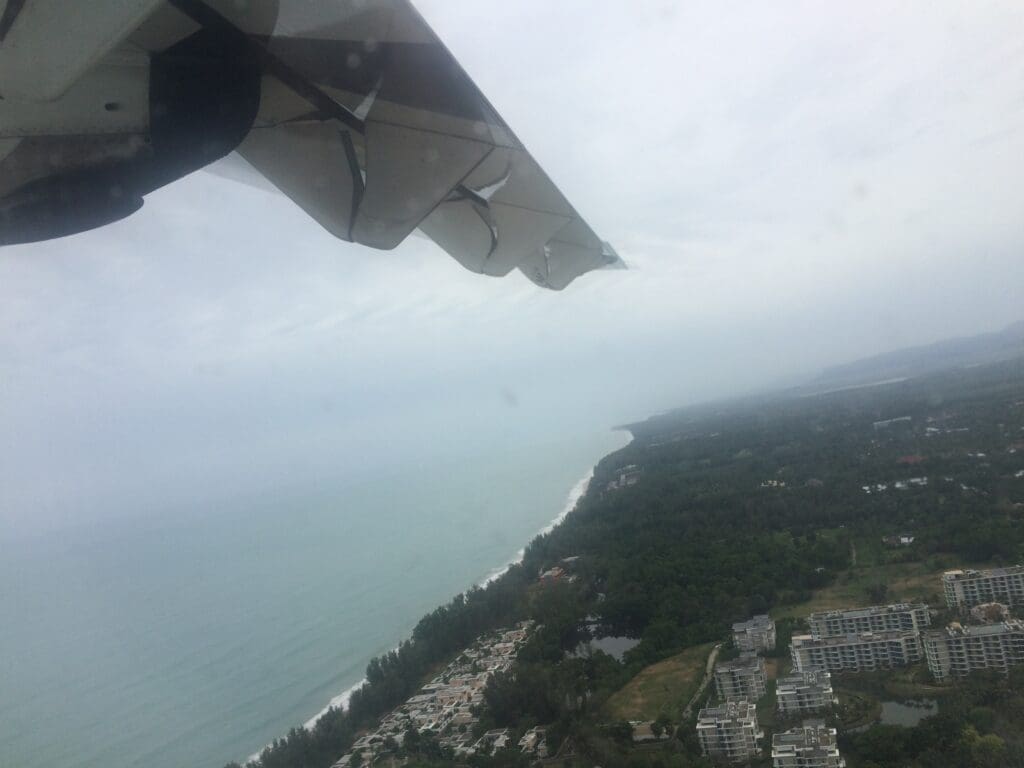
Unfortunately, due to the low lingering clouds that morning, I was not treated to any final views of Phuket Island as we banked around and made our way over to the Thai mainland. In the usual manner, a minute or so after departure an announcement was made informing passengers to keep their belts fastened whilst seated and informing us of the inflight meal on the short flight to Hat Yai.
After a few minutes of bumping around, the ATR 72 rose up above the thick layer of clouds at which point the seatbelt signs were extinguished. Almost immediately after these had dinged off, the two crew members rolled a trolley out into the aisle and began the inflight service. Expecting nothing more than a cardboard box, I was pleasantly surprised when the crew came around with trays featuring a chicken sandwich, salad and fruit served in plastic dishes. Considering that the flight time that morning was just 43 minutes, this was a wonderful and surprisingly substantial offering! Importantly, this was of good quality and left me with absolutely zero complaints.
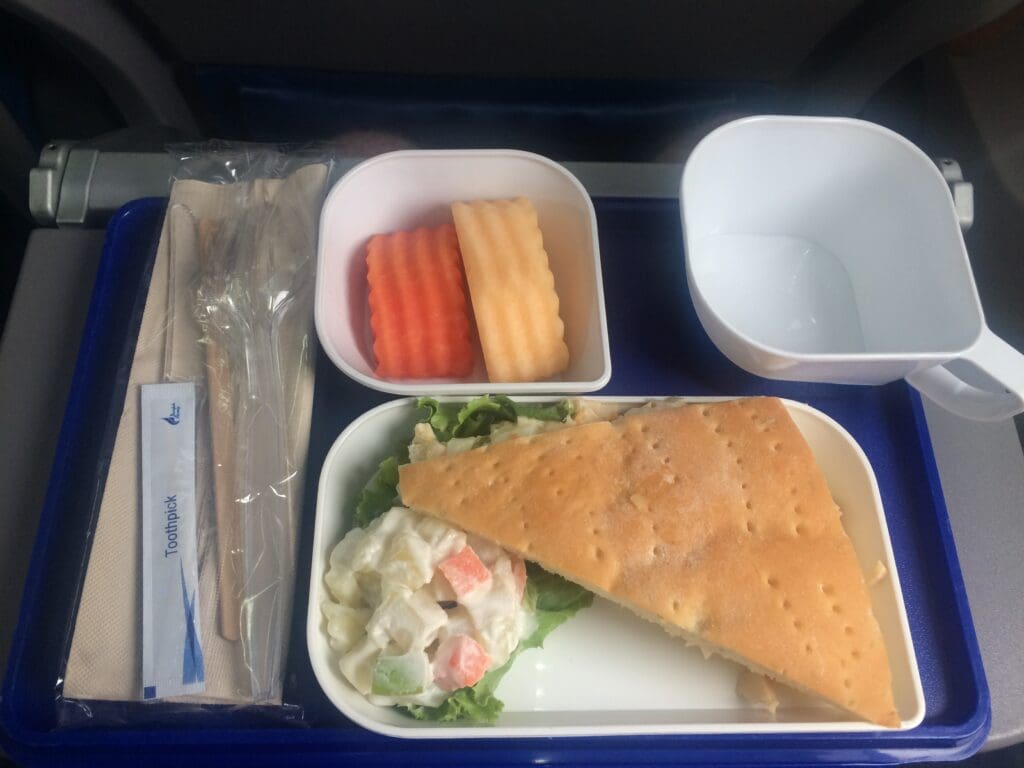
As we buzzed through the skies of Thailand at 15,000 feet, the clouds parted and revealed the country’s western coastline indicating that we were nearing our destination. At this time, the captain performed a speech in Thai and English during which they went over our route and briefed passengers on the weather in Hat Yai before ending this and switching on the seatbelt signs in preparation for our descent. This was immediately followed by a pre-arrival announcement from one of the flight attendants which was made whilst the other passed through the cabin collecting the remains of the service.
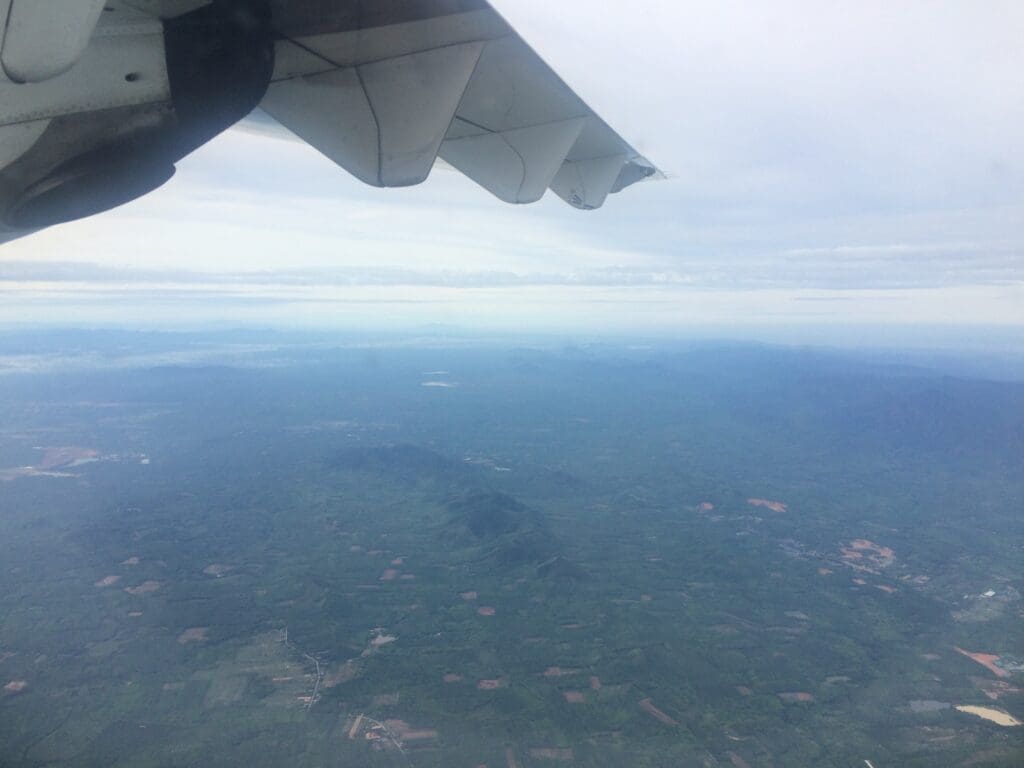
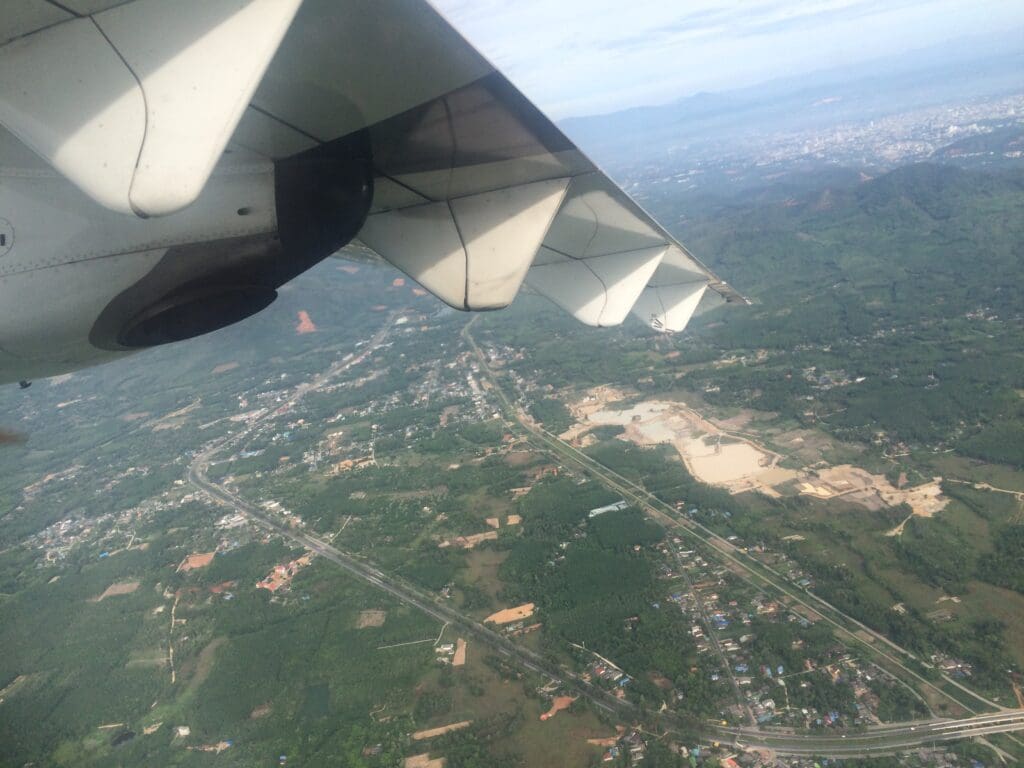
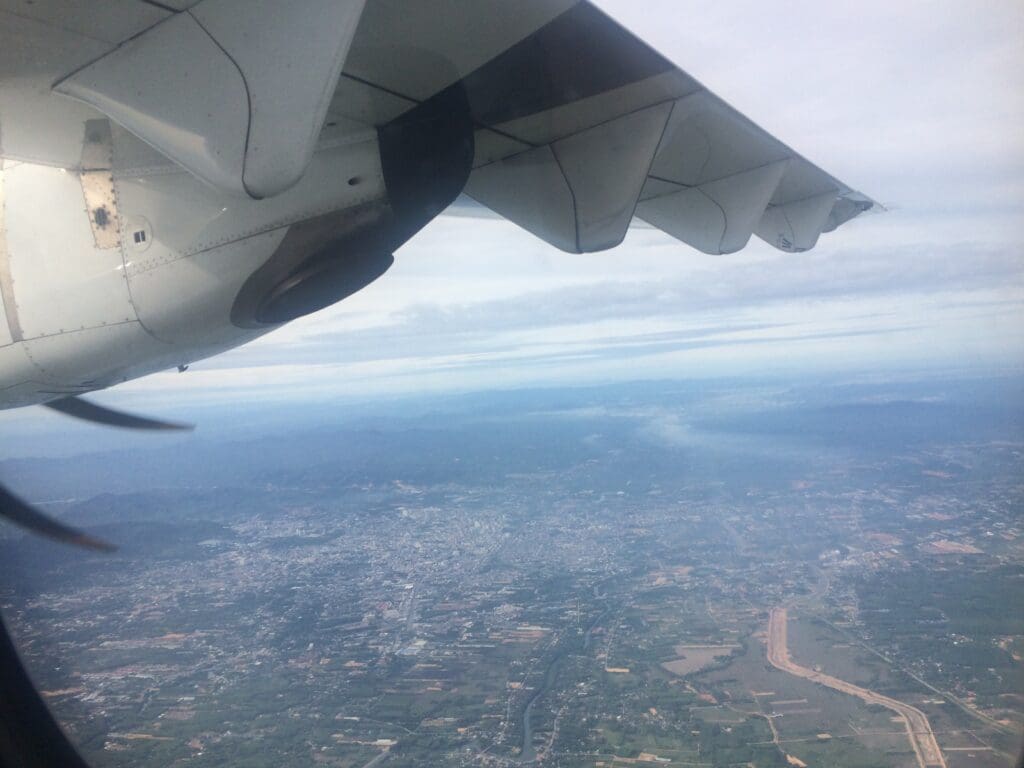
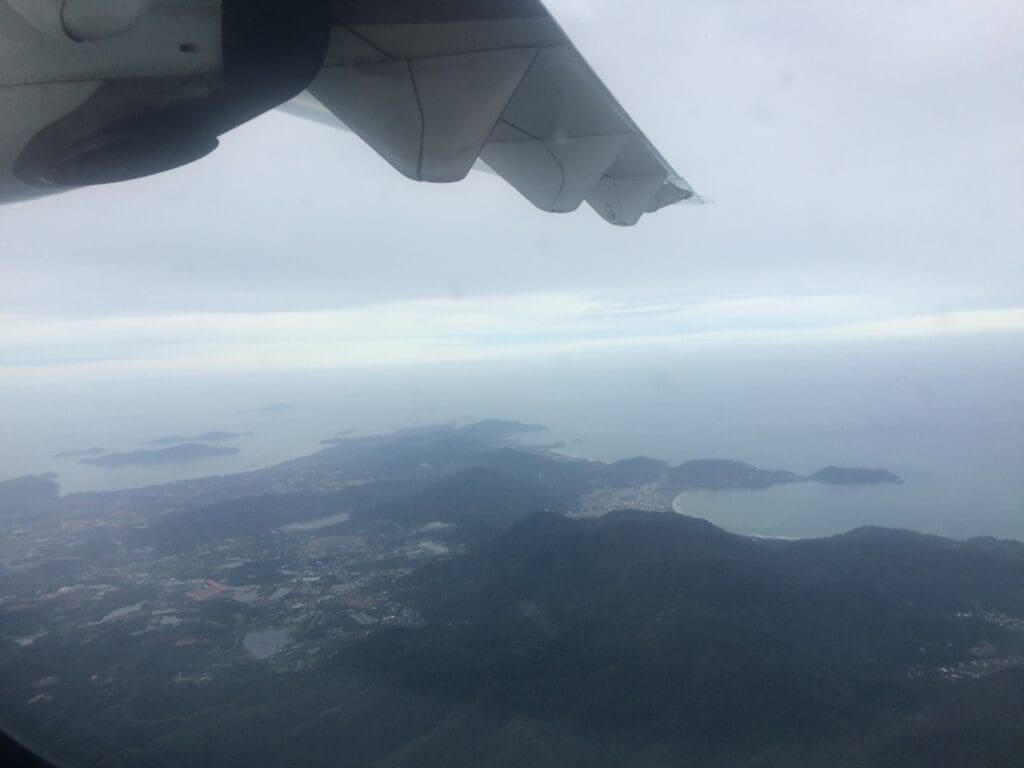
Looking outside, as we descended the hills and forests of Southern Thailand could be seen before we reached the city of Hat Yai. Passing to the north of this and sitting on the right hand side of the aircraft, I was offered a good view of the city before we began a 180 degree turn to line up with the airport’s Runway 26. As we sank further towards the fields below, the flaps were extended and followed by the gear and soon the aircraft sank down over the perimeter fence of Hat Yai Airport. Immediately afterwards, the ATR zoomed past a Thai Smile Airbus A320 that was holding before heading off back to its base in Bangkok. At 0819, the aircraft made a soft return to earth before braking rather heavily as if in a rush to exit the runway.
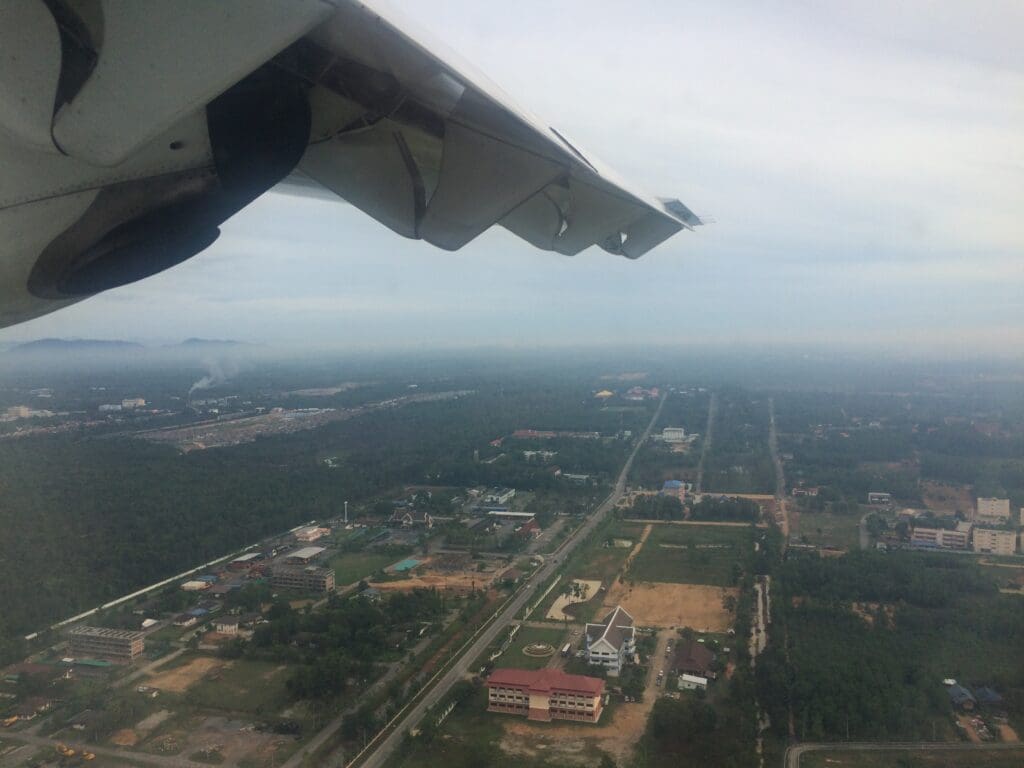
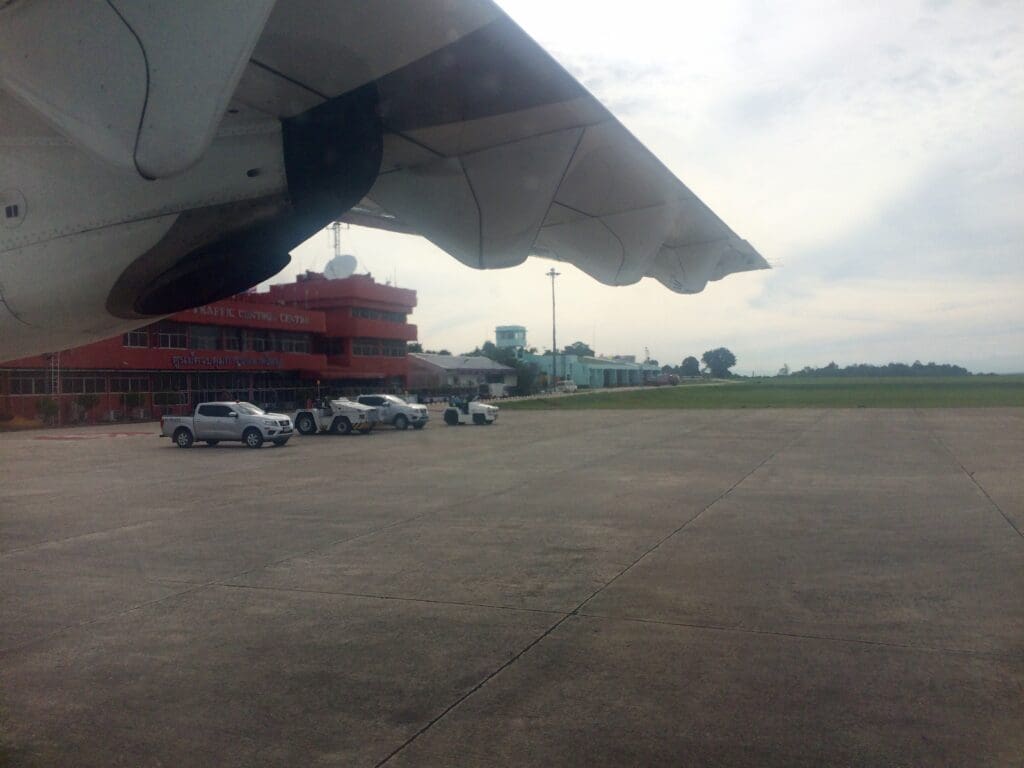
As we vacated the runway, one of the flight attendants welcomed all to Hat Yai and thanked passengers for flying with Bangkok Airways. From there, the aircraft made a short taxi over to Stand 1 and parked up next to a Thai AirAsia Airbus A320 that would shortly be pushed back at the start of its voyage north to Bangkok Don Mueang. Once on stand, the aircraft’s two engines spooled down and with an army of ramp staff already waiting to tend to the aircraft, it wasn’t long before the door was opened and disembarkation commenced. After thanking the cabin crew and receiving a friendly farewell, I walked the short distance into the terminal and following a very short wait, my bag appeared and I made my way out of the airport. A word of advice for anyone travelling to Hat Yai, if travelling to the city centre, despite what taxi drivers say, there are songthaews running from the end of the car park to the city centre which tend to be as quick as a taxi and much cheaper.
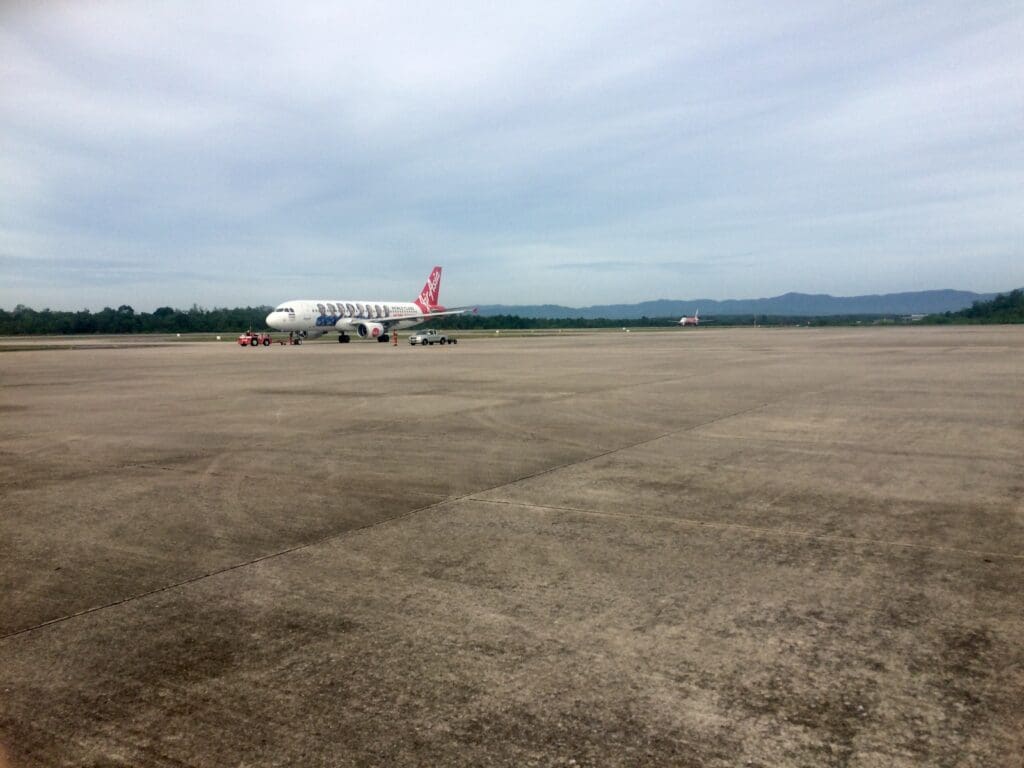
Summary
Bangkok Airways offered me an absolutely fantastic short flight and I was left with absolutely nothing to complain about my experience. I would happily consider the airline in the future and hope to sample the delights of their Airbuses at some point. Top marks!

